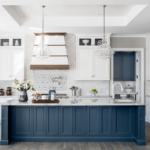Traditional houses have complex values because these are related to the culture of a people, such as cultural, historical, and norms or rules attached to a traditional house. Yogyakarta traditional house is one of them, which is called kencono ward. There is something unique about the traditional house of Yogyakarta. Let’s immediately see the following explanation.
- Ward Kencono Traditional House
People think that the traditional house from Yogyakarta is the joglo house, but that isn’t completely right. The reason is, the joglo house is a traditional house in Central Java. East Javanese traditional houses are also called joglo, but there are specific differences between the two joglo houses. The difference is in the shape of the roof design and the building materials used. So basically, the Yogyakarta traditional house is not a joglo house as people think so far.
Since Yogyakarta separated from Central Java, the people of Yogyakarta have their own traditional house called kencono ward, which is similar to a joglo house. Maybe that’s what makes people think that the Yogyakarta traditional house is a joglo house. This traditional house has a distinctive style of Mataram or Yogyakarta Palace, and this traditional house used to be the king’s residence. The size of the kencono ward is larger than the joglo house and is wider and wider. Ward Kencono has a design that absorbs the influence of Dutch, Chinese, and Portuguese architecture.
The design and architecture of the kencono ward are indeed similar to a traditional Javanese house. The roof of the Yogyakarta traditional house has a high connection that supports four pillars in the middle called Soko Guru. While the material for the house is made of tile/shingle. Meanwhile, the walls and poles are made of the highest quality wood. The pillar supports the golden black stone steps.
Then the floor of the kencono ward is made of marble and granite with a higher floor surface than the others.
This kencono ward has a large size according to the needs of its function. In addition, the main yard of this house is usually planted with various types of green plants and a very neat bird cage.
This shows that the design of this typical Yogyakarta house has a philosophy that prioritizes the balance of nature. In addition, the motifs of the designs contained in this house are very thick with Javanese nuances combined with Dutch, Chinese and Portuguese nuances, and Hinduism.
Bansal kencono has three parts, namely the Pendopo, pringgitan and omah njero. Pendopo is a meeting room, Pringgitan is a place for wayang performances, and Omah Jero or a family room is a gathering place for large families.
- Yogyakarta Kampung Traditional House
In addition to the house of the sultan of Yogyakarta, there is also a traditional house where the ordinary people live. This village house mostly has a smaller size, and the shape is a square. Kampung house or Rumah Kampung has an odd number of rooms and is part of a myth believed by the locals. If a house has an even number, it is believed to bring disaster and misfortune to the households.
The village house is supported by pillars totaling 4, 6, 8, and so on. The roof is located on the top twelve sides of the house with one ridge, where the roof on the left and right is called the lid keyong. The age house model building framework consists of poles, ander, blandar, penegret, sundut, and molo.
- Limasan Traditional House
The following traditional house of Yogyakarta is Limasan. Limasan house is a house that can be said to have a fairly high rank and is most widely used by the Javanese people. Unlike the Kampung house, the roof of the Limasan house covers the top of. The roof of the Limasan house has four sides, and the overall shape of this house is rectangular with four, six, eight, and so on pillars.
What is unique about the Limasan house is the Molo which is a term for the roof framework of the Limasan traditional house. Limasan house consists of three parts: the front of the house is used as a guest room. The middle part is for and functions as a living room, and the back of the limasan house is sentong kiwo and sentong tengah.
- Joglo House
Yogyakarta also has another traditional house which is the simplest and most basic, called Joglo. This traditional house is the first building used by people to protect themselves from cold air, hot sun, heat, and rain. This Joglo house has a very simple building and only uses 4 to 6 pillars. Around the building of this traditional house erected walls made of woven bamboo or boards. Because it is very simple, this traditional house only has one room. If there is a family need, it will be added with another room on the house’s back porch.
Well, that’s information about Yogyakarta traditional houses that are interesting for you to know. These traditional house has an essential meaning from a historical point of view and again, the traditional house is a cultural heritage that must be preserved.

Whether your trips take you to a long stroll on beaches, delicious cuisines, relaxing spas and resorts or urban attractions, extra research will give you the best experience for your visit. Get to know more about Yogyakarta by visiting Wonderful Indonesia.
 Make Your Child’s Visit to the Dentist’s Office Enjoyable
Make Your Child’s Visit to the Dentist’s Office Enjoyable  Mastering Online Masterclasses: Choosing the Right Online Violin Instructors
Mastering Online Masterclasses: Choosing the Right Online Violin Instructors  Empowering Healthcare Professionals: How WT Farley Oxygen Regulators Enhance Patient Care
Empowering Healthcare Professionals: How WT Farley Oxygen Regulators Enhance Patient Care  Elevate Your Collection: Unveiling the Beauty of Custom Wine Cellars in Ottawa
Elevate Your Collection: Unveiling the Beauty of Custom Wine Cellars in Ottawa  Enhancing Your Online Presence with Real Estate SEO Services
Enhancing Your Online Presence with Real Estate SEO Services  The Epitome of Luxury: Elevating Spaces with Imperial High-End Kitchen Cabinets
The Epitome of Luxury: Elevating Spaces with Imperial High-End Kitchen Cabinets  Pokémon go accounts- Exploring the reasons behind player demand
Pokémon go accounts- Exploring the reasons behind player demand  Pokemon go shortcut to greatness – Buy now
Pokemon go shortcut to greatness – Buy now  Online slot games for classic fruit machine lovers
Online slot games for classic fruit machine lovers 




